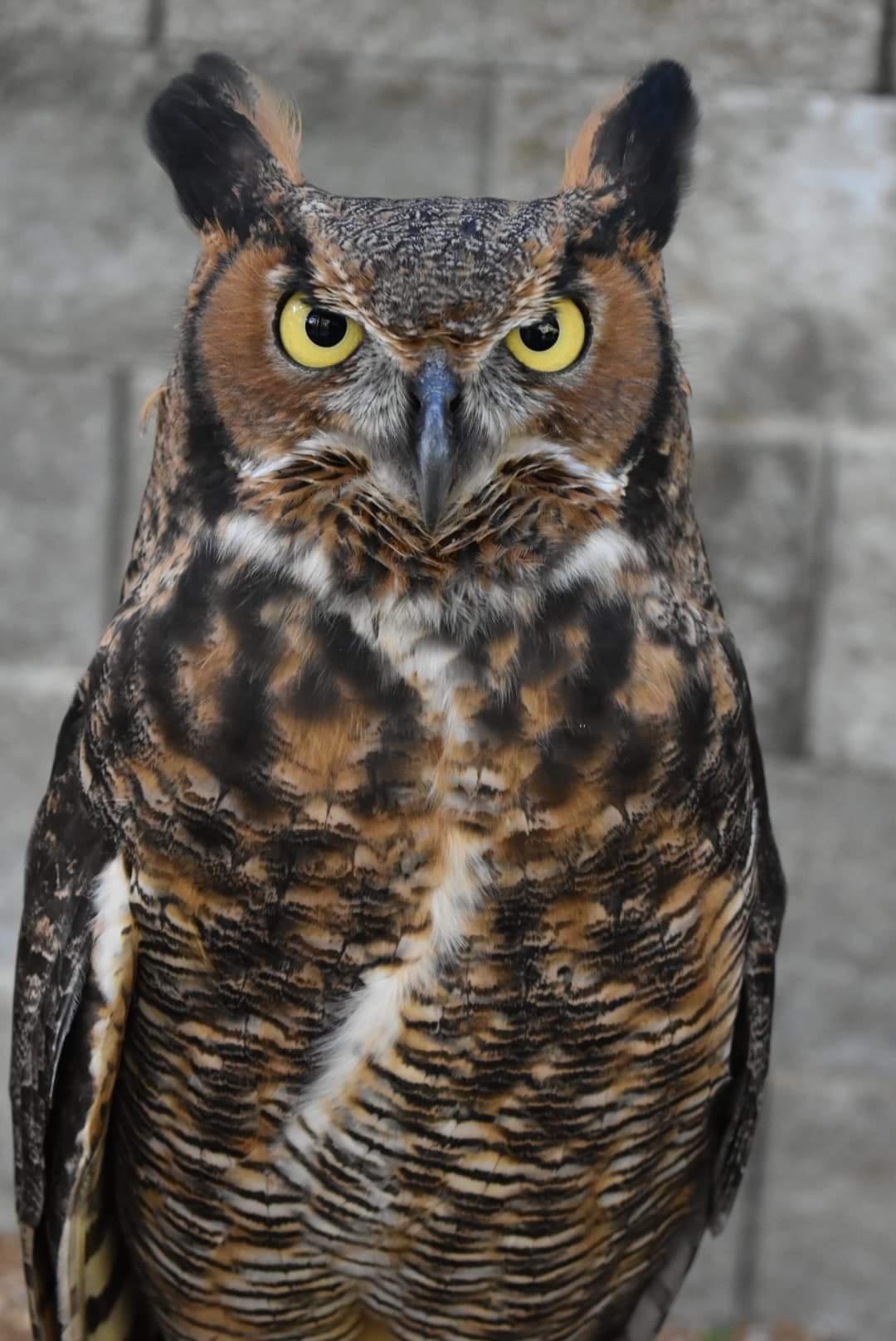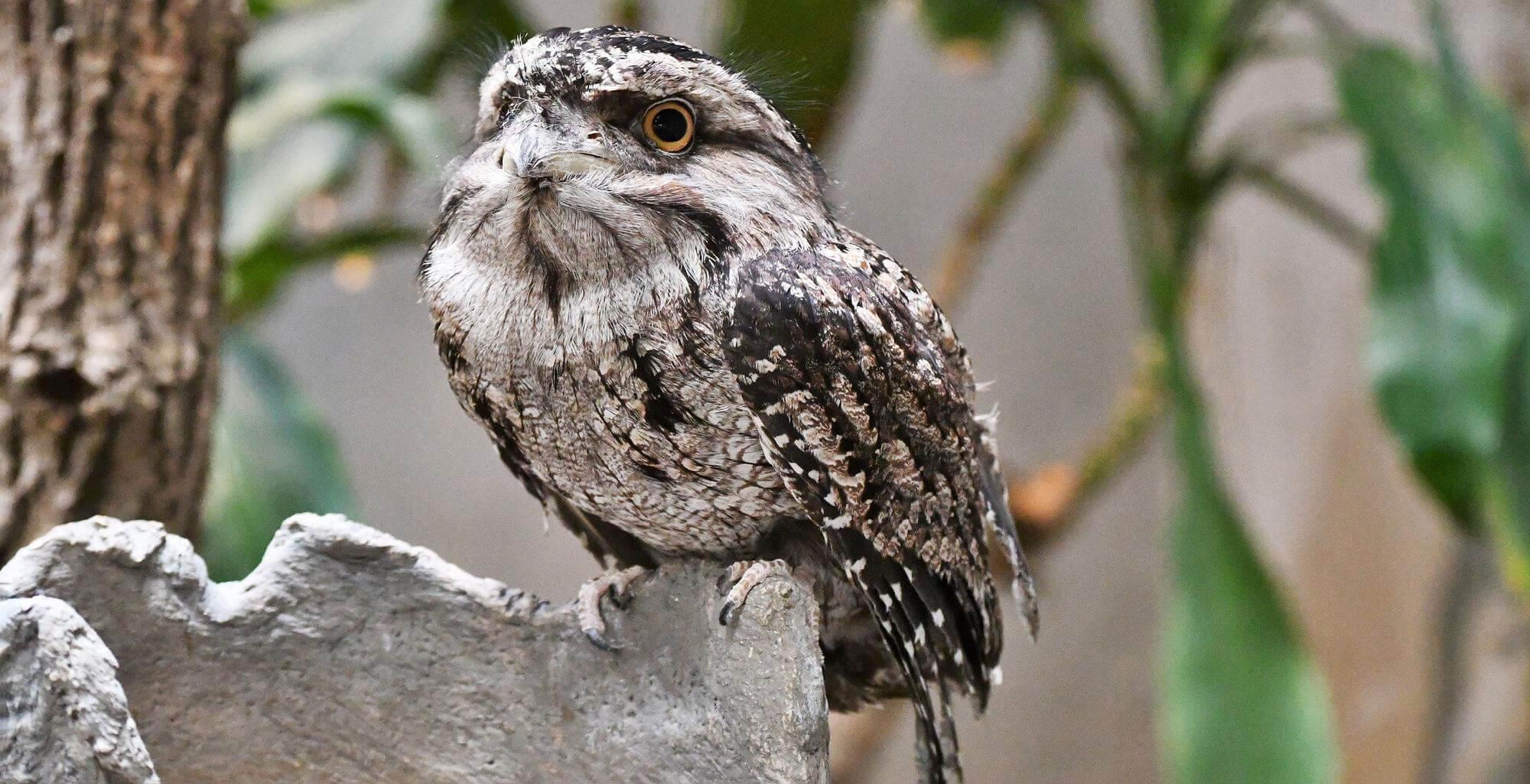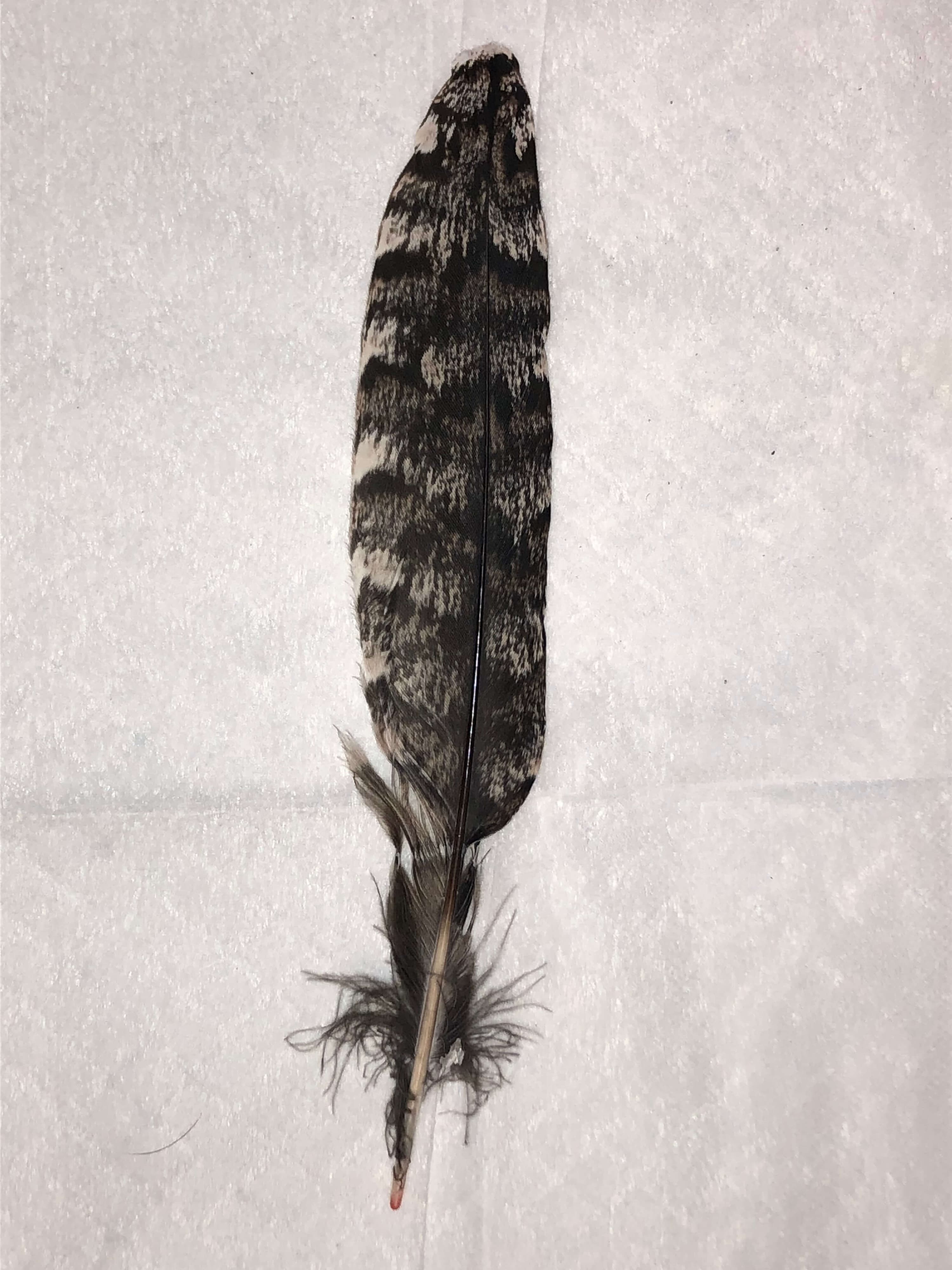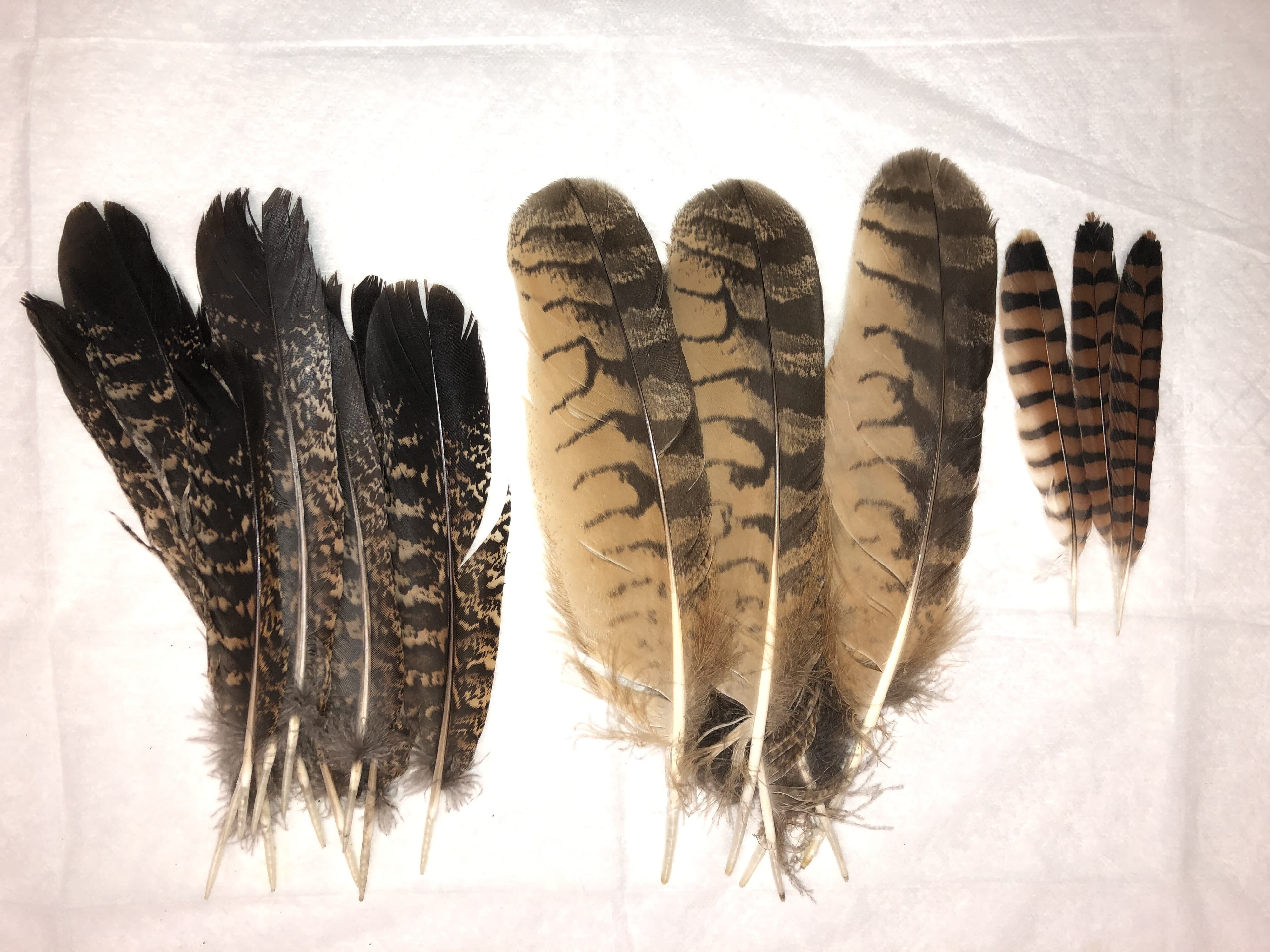Author: Saint Louis Zoo Endocrinologist Corinne Kozlowski

Have you ever come across a feather on the ground and marveled at its beauty? Finding feathers is often seen as a sign of good luck, and for scientists at the Saint Louis Zoo, finding feathers from our birds is considered “lucky” as well. That’s because feathers contain a wealth of information that can be used to understand and improve the well-being of the birds in our care.
Like our hair, feathers grow over the course of several weeks. As they grow, hormones, including corticosterone, are deposited into the vane, or the plumed part that grows from the central shaft. Corticosterone, the bird equivalent of human cortisol, is a hormone associated with activity, metabolism and sometimes stress. By measuring concentrations in feathers, we can obtain a long-term measurement of corticosterone production, which can give insight into that bird’s well-being. In addition, collecting feathers is completely non-invasive, as birds molt their feathers annually. However, because measuring corticosterone in feathers is a relatively new technique, it requires a lot of testing to be able to correctly interpret the measurements we obtain.

Recently, scientists in the Endocrinology lab measured corticosterone levels in wing feathers and tail feathers from ten tawny frogmouths at the Saint Louis Zoo. We focused on tawny frogmouths because we have a large number of this species, which allowed us to compare concentrations among individuals as well as between males and females. We found that corticosterone concentrations were higher in wing than in tail feathers and that concentrations varied among individuals, but not in relation to sex. We also found that there was quite a bit of variation among feathers from the same individual. This may reflect differences in corticosterone production during growth, as feathers do not always grow in at the same time.

To collect additional samples, we are currently partnering with the World Bird Sanctuary (WBS) to measure corticosterone in feathers from a number of birds in their care. To date, WBS staff have collected 391 feathers from 28 individuals, comprising 10 species, including red-tailed hawks, turkey vultures, and American kestrel.

These samples will provide us with a better understanding of the typical range of corticosterone concentrations found in feathers, as well as the amount of variation between wing and tail feathers, males and females, individuals, and species. We hope that by gathering this information, we will be able better interpret feather corticosterone measurements and use this measure to support excellent well-being for birds at the Saint Louis Zoo.

